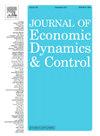暗池下的执行风险与价格改善
IF 2.3
3区 经济学
Q2 ECONOMICS
引用次数: 0
摘要
我们开发了一个具有异构代理的理论动态交易模型,以研究引入暗池(与作为限价单市场组织的传统光明交易所并行运行)如何主要影响执行风险和价格设置,以及这些变化如何反过来影响不同交易者类型的福利。我们的模型的计算模拟表明,暗池的加入降低了传统光交易的流动性。由于交易活动向暗池的转移,传统亮化交易所的订单执行时间更长,有效价差更大,这证明了流动性的减少。我们还确定了影响交易者绩效的两个相反渠道:执行延迟渠道和价格改善渠道。关于执行延迟通道,暗指令导致不耐烦的交易者(寻求快速交易)执行时间更长,而投机者(等待相对于资产基本价值有利的执行价格)执行时间更短。这是因为暗订单通常比市价(限价)订单执行时间更长(更短)。在价格改善渠道方面,暗订单对缺乏耐心的交易者提供比市场订单更有利的价格,而暗订单对投机者则可能导致不那么有利的定价。这是因为暗订单通常是在限价订单市场的买入价和卖出价的中间报价执行的。最终,对没有耐心的交易者和投机者的执行风险、价格改善和福利的影响取决于这两个相反的通道中哪一个占上风。本文章由计算机程序翻译,如有差异,请以英文原文为准。
Execution risk and price improvement under dark pools
We develop a theoretical dynamic trading model with heterogeneous agents to examine how introducing a dark pool—running in parallel to a traditional lit exchange organized as a limit order market—primarily affects execution risk and price settings, and how these changes, in turn, influence the welfare of different trader types. Our model’s computational simulations show that the addition of a dark pool reduces liquidity on the traditional lit exchange. This liquidity reduction is evidenced by longer order execution times and a wider effective spread in the traditional lit exchange, driven by the migration of trading activity to the dark pool. We also identify two opposing channels that influence traders’ performance: the execution delay channel and the price improvement channel. Regarding the execution delay channel, dark orders lead to longer execution times for impatient traders (who seek to trade quickly) and shorter execution times for speculators (who wait for favorable execution prices relative to the asset’s fundamental value). This is because dark orders generally have longer (shorter) execution times than market (limit) orders. Regarding the price improvement channel, dark orders offer more favorable prices for impatient traders than market orders, while dark orders can result in less advantageous pricing for speculators. This is because dark orders are typically executed at the midquote of the bid and ask prices from the limit order market. Ultimately, the effect on execution risk, price improvement, and welfare for both impatient traders and speculators depends on which of these two opposing channels prevails.
求助全文
通过发布文献求助,成功后即可免费获取论文全文。
去求助
来源期刊

Journal of Economic Dynamics & Control
ECONOMICS-
CiteScore
3.10
自引率
10.50%
发文量
199
期刊介绍:
The journal provides an outlet for publication of research concerning all theoretical and empirical aspects of economic dynamics and control as well as the development and use of computational methods in economics and finance. Contributions regarding computational methods may include, but are not restricted to, artificial intelligence, databases, decision support systems, genetic algorithms, modelling languages, neural networks, numerical algorithms for optimization, control and equilibria, parallel computing and qualitative reasoning.
 求助内容:
求助内容: 应助结果提醒方式:
应助结果提醒方式:


